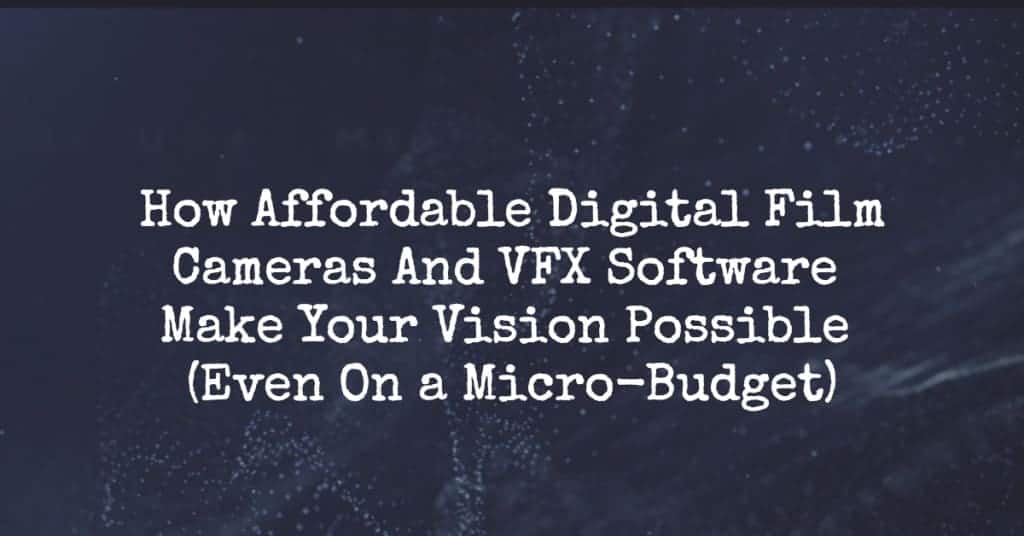Christopher Nolan’s first film, the 1998 picture Following, was shot on black and white 16mm film. To conserve money on expensive film stock, Nolan had his actors rehearse each shot extensively because they could only afford two takes.
I was faced with a similar task when creating my micro-film, showing the opening of the Post-Human world. This world shows the future of humanity, where nanotechnology can make every dream come true and where people can fly, thanks to magnetic targeted fusion implants.
How Affordable Digital Film Cameras Make Your Vision Possible (On a Micro-Budget)
We had $10,000 to shoot this VFX-heavy film, and $3,000 of that went into renting out a famous home for three hours of shooting. A minute over three hours would cost us another $1,000, money that could be used for post-production and VFX.
We pulled off the 3-hour shoot because, like Christopher Nolan, I spent the time practicing and getting to know my camera. Never go in cold. Walking into a rental shop the day before a shoot is a great way to spend money needlessly without getting comfortable with digital film cameras. And if you’re not comfortable, things go wrong fast.
Our production relied on a Blackmagic Pocket Cinema Camera because its sensor is competitive with the best digital film cameras in Hollywood and it cost less than $1,000. For the price of renting similarly powerful cameras for a single day, I was able to buy my camera, complete a few camera tests and even film my entire rehearsal day, practicing each shot.
Speaking of practice and preparation, know your size limits. Our location was perfect, but there was no way I could’ve done the shoot in three hours with a huge camera. The Pocket was small enough to put anywhere on set. Before we walked in the door, I knew the exact dimensions of my camera setup and where I could get my shots in the house.
There is nothing wrong with shooting on the fly of course, but when you are staring at a stop watch, a set plan gets the job done. If you plan ahead, you can do so much with something so little.
I can’t help but wonder what Nolan would’ve been able to do in 1998 if he’d had access to the technological riches filmmakers have at their disposal today. As difficult as filming Post-Human was (our crew was only me, my wife and an NYU film student), we still achieved incredible results.
Following, not being a sci-fi film, could be made today with a similar micro-budget (Nolan only spent $6,000), and in the hands of the master, today’s technology would’ve allowed his film to rival current Hollywood productions as opposed to the grimy, black and white noir he had to go for because of equipment limitations.
The lesson here is clear: with a lot of practice and planning you can create high-quality films without breaking the bank. Yes, you have to do your research to get the best bang for your buck, but the cost barrier associated with making your vision a reality has been virtually erased.
Whatever your dream is, it is now affordable to film. Green light yourself. That’s what I did.
About David Simpson
David Simpson is author of the best-selling sci-fi novel series, Post-Human. He wanted to be a novelist since he was 6 years old, but decided to become and English teacher before discovering e-books and realizing he could indie-publish his novels. Due to the success of the Post-Human series, Simpson and his wife, Jenny, made the leap into filmmaking to shoot a micro-film of the opening of the Post-Human world. Born in Ireland, Simpson now lives in Vancouver with his wife.
David Simpson is also a TEDx speaker, and his most recent talk can be seen here:
For more information, visit post-humannovel.com.


